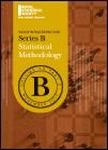作者:Hutton, JL; Solomon, PJ
作者单位:University of Adelaide
摘要:The implications of parameter orthogonality for the robustness of survival regression models are considered. The question of which of the proportional hazards or the accelerated life families of models would be more appropriate for analysis is usually ignored, and the proportional hazards family is applied, particularly in medicine, for convenience. Accelerated life models have conventionally been used in reliability applications. We propose a one-parameter family mixture survival model which ...
作者:Dette, H
摘要:We introduce a new class of 'standardized' optimality criteria which depend on 'standardized' covariances of the least squares estimators and provide an alternative to the commonly used criteria in design theory. Besides a nice statistical interpretation the new criteria satisfy an extremely useful invariance property which allows an easy calculation of optimal designs on many linearly transformed design spaces.
作者:Garthwaite, PH; Brown, PJ; Hand, DJ; Wold, S; Cox, DR; Zidek, JV; terBraak, CJF; Stone, M; Brooks, R; Goutis, C; Lindley, DV; Burnham, AJ; MacGregor, JF; Viveros, R; Hastie, T; Tibshirani, R; Helland, IS; Jones, MC; Sasieni, PD; Southworth, R; Taylor, CC; Sundberg, R; Thomas, EV; Tong, H
作者单位:University of Kent; Umea University; University of Oxford; University of London; University College London; Universidad Carlos III de Madrid; McMaster University; Stanford University; University of Toronto; University of Oslo; Open University - UK; Hebrew University of Jerusalem; Cancer Research UK; University of Leeds; Stockholm University; United States Department of Energy (DOE); Sandia National Laboratories
作者:Shen, Y; Fleming, TR
作者单位:University of Washington; University of Washington Seattle
摘要:A class of test statistics is introduced which is sensitive against the alternative of stochastic ordering in the two-sample censored data problem. The test statistics for evaluating a cumulative weighted difference in survival distributions are developed while taking into account the imbalances in base-line covariates between two groups. This procedure can be used to test the null hypothesis of no treatment effect, especially when base-line hazards cross and prognostic covariates need to be a...
